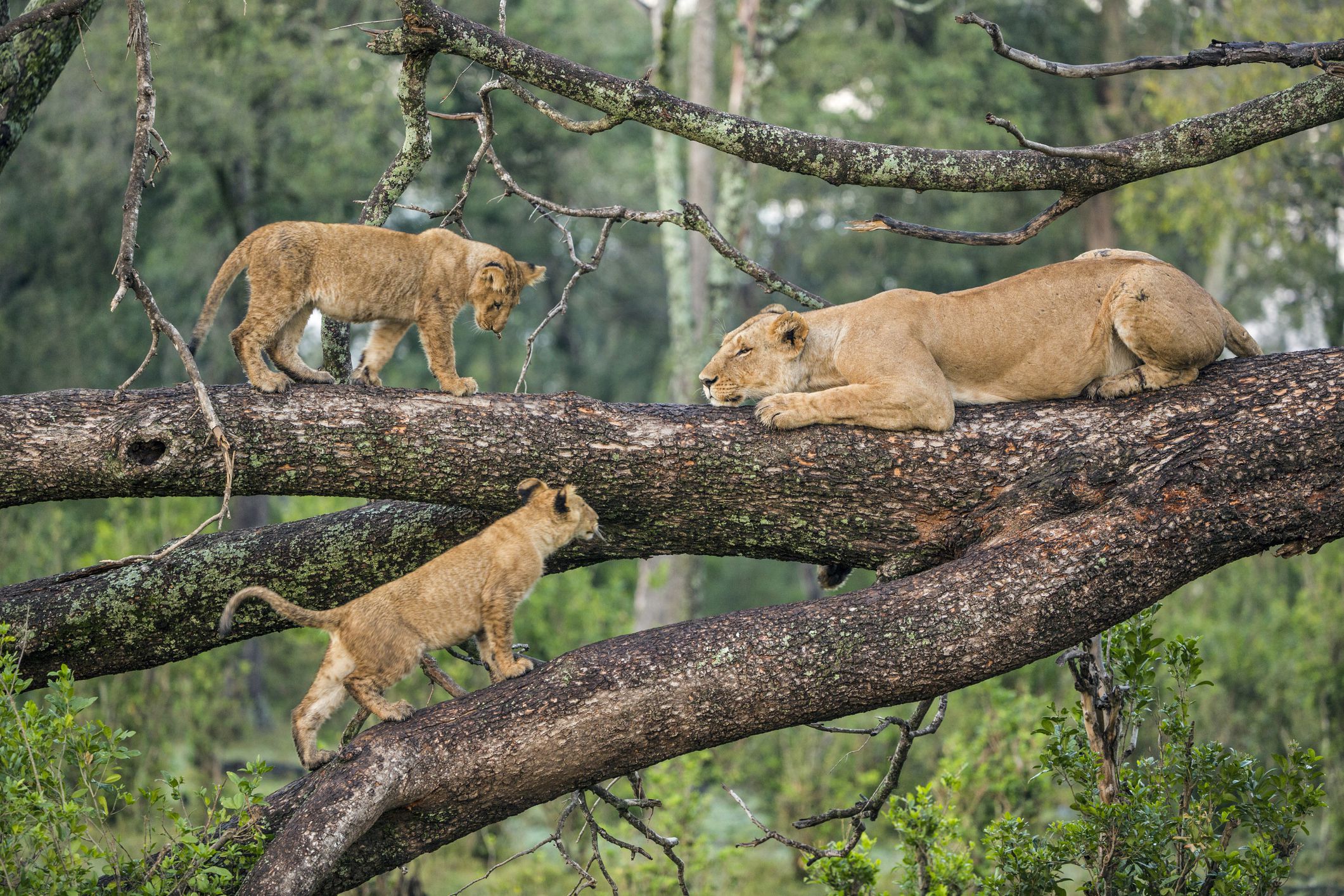Best places to see tree Climbing Lions in East Africa : Tree climbing lions are such unique lion species that are commonly found in only two areas in the entire world, these are such breathtaking on a safari in the entire East Africa, the tree climbing lions are found in Ishasha sector of Queen Elizabeth National Park of Uganda and in Lake Manyara National Park of Tanzania. Tree climbing lions are the most fearful and respected African wild animals, though the climbing lions are the big cats and like other lions but these climb the trees. Climbing lions do climb to get the better vantage point while surveying the land for the prey.
Tree climbing lions are like other lion species but due to the fact that these do climb the trees to do observe very well their prey because they can be having the best ever best viewing point of observing well their prey, that’s the reason and too strange to describe the tree climbing lions in East Africa. These lions are so attractive and hence making the tourists to do a safari in East Africa and have a view to these unique lions.

Interesting facts to why the tree climbing lions do climb.
The lions climb the trees because the view can be good for the spotting of the various preys that can be seen loitering around the park, as these big cats can easily pounce on their food specially the antelopes without easily being noticed.
The lions do climb the trees to escape the heat from the ground and get shelter from the rain, at times the temperatures can eventually go beyond up to 280 which is cannot be conducive to the cats hence the climbing of the trees to escape the instant heat from disrupting their lives.
The lions do climb the trees to protect themselves from the insect bites especially the tsetse flies that do attack and disrupt their lives especially during the wet season, so climbing the trees helps the lions to stay safe from the disruptions of any attack like the tesetseflies.
The trees act as the best resting places where these tree climbing lions can go and rest after spending the whole day hunting due to the most interesting and wide branches that are always available for the lions to get the best accommodation there.
The tree species that are climbed by the tree climbing lions includes acacia trees and the sycamore trees and also the candelabras, as these provide the shelters to the lions during all the everyday seasons that can be available that is the dry season and the wet season which sustains their lives in the friendly environment.
Adaptations of the tree climbing lions in Queen Elizabeth National Park.
Tree climbing lions have got other animals which act as food to the lions like the Uganda kobs, cranes, the cows from the neighboring villages, the Queen Elizabeth National Park is the best place for them to stay, all these conditions makes the most conducive place for the climbing lions to sustain their lives in the park.
Adaptations for the tree climbing lions in Lake Manyara National Park.
The tree climbing lions are adapted because of their behaviors in Lake Manyara National Park is that they enjoy a cool breeze from up in the tree and also they get a better view of their surroundings, that is from up in the trees, the lions are able to also observe their prey in the savannah plains.

Best time to see tree climbing lions in Queen Elizabeth National Park.
Queen Elizabeth National Park and the Ishasha sector are open to the visitors on a Uganda safari throughout the year, but the dry season between April, June and July is considered as the peak season for the tourists in Uganda, this season is perfect for a safari because the park is less and muddy and the tee climbing lions are easier to locate, Best places to see tree Climbing Lions in East Africa
Best time to see the tree climbing lions in Lake Manyara National Park.
The best time for viewing the tree climbing lions in Lake Manyara National Park is during the dry season in the months from June to October as this is the best time when the lions are best seen, as the tourists engage in the nature walks to experience the lions in the park.


